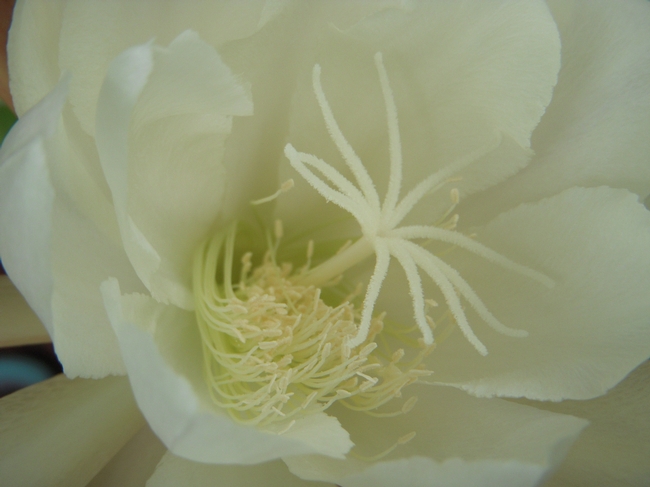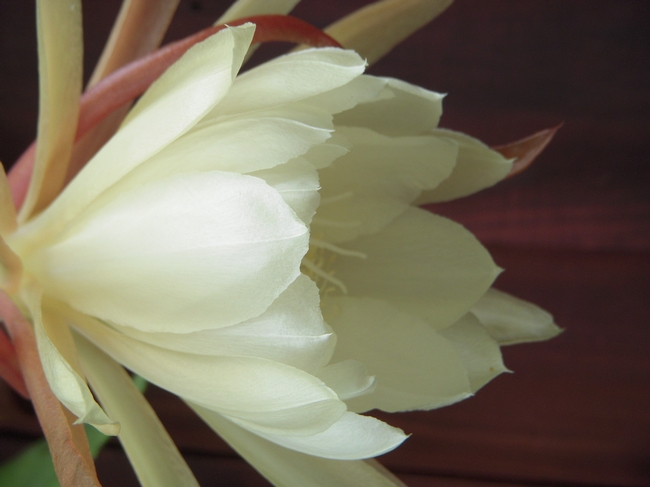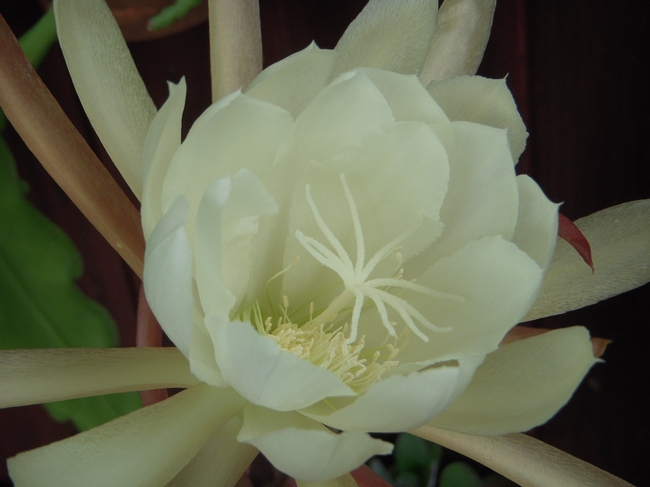Cactus Growing in a Rainforest?
Generally when one thinks cactus, one usually thinks desert. Personally, I imagine a plant with thorns or spines that tolerates a dry hot landscape. Yet a spineless variety of cactus also grows in the tropical rainforests of Mexico, Central America, Northern South America and the Caribbean Islands. And believe it or not, this cactus can survive in Solano County.
If you are fortunate enough to obtain a cutting from a friend or at a plant exchange or sale, don't hesitate to give the Epiphyllum a try. Here are a couple growing tips:
1. Place the cutting in a dark place that's cool and dry.
2. Wait until the cut end forms a scar.
3. Find a clean small pot since this cactus prefers to be rootbound.
4. Loosely add potting mix to the bottom of the pot and around the cutting.
5. Lightly water but do not soak the soil. Set the pot outdoors in the shade.
6. When new growth appears and/or the cutting appears to be rooting, increase the watering. Soil should be moist — not soggy or bone dry.
Because the Epiphyllum needs shade most of the day, I placed my plant beneath a patio overhang. The overhang provides protection from summer's scorching noonday sun and winter's unpredictable frost. The cutting I obtained from a friend in Dixon who successfully has grown this cactus for decades. Although my cutting took several years to not only sprout into a multi-branching plant but to flower, the wait was worth it, as evidenced by the photographs below. Last year I marveled in awe when the plant produced its first, one and only blossom. This June I enjoyed the delicate almost translucent petals of three spectacular blooms that once again seemed to appear out of nowhere.
Also known as “Jungle Cacti,” “Phyllocacti,” and “Orchid Cacti,” the Epiphyllum is often called by its nickname of “Epi.” This rainforest beauty with its jointed stems and no leaves is an eye-catcher when planted in a hanging basket under a tree or in a clay pot mounted to a fence. In its normal habitat, this plant attaches its roots to the crotch of trees and drapes its scalloped paddle-like branches downward. However, some Epis present stocky branches that arch upright or at an angle. Epiphyllum hybrids are available with small to large flowers in almost every color except blue. The trick is finding them.

photos by Launa Herrmann

Epi6

Epi3

